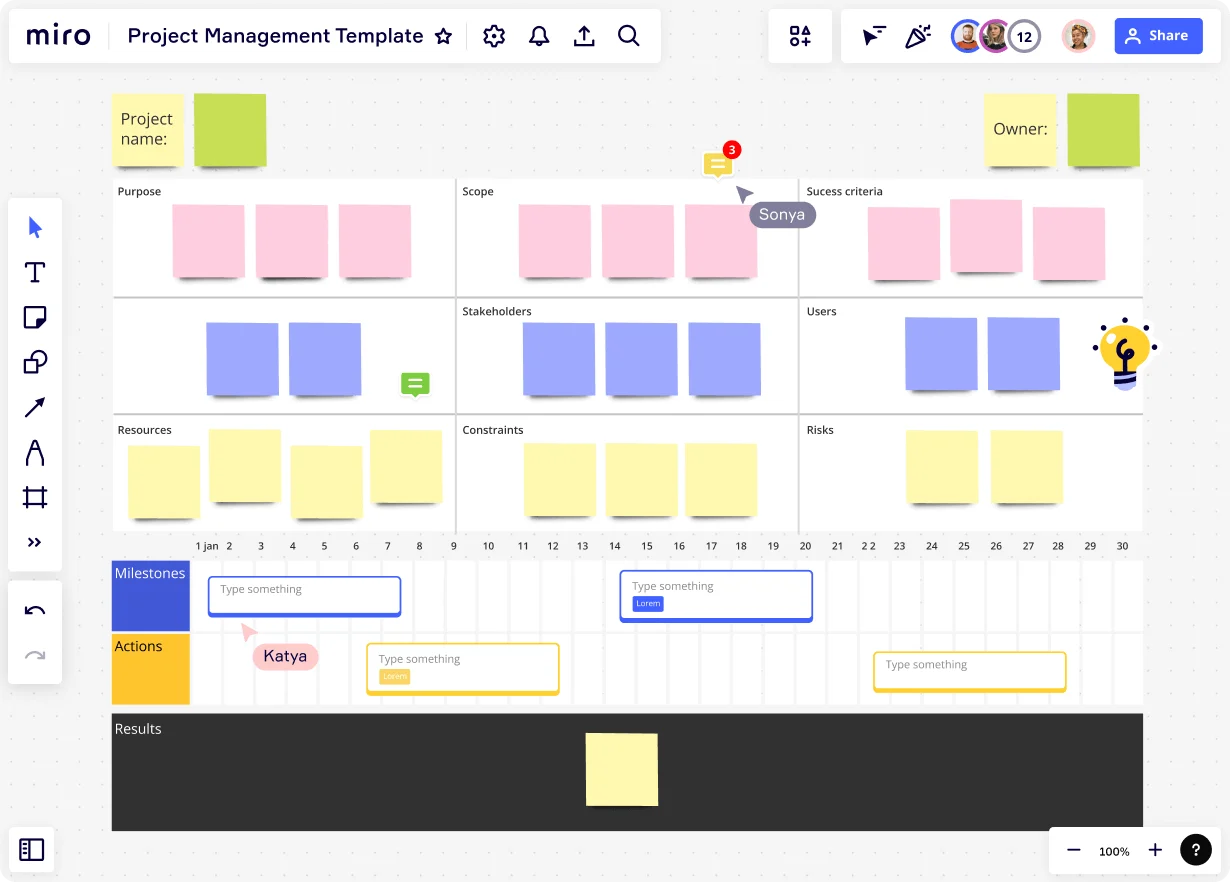
Project closure checklist

Summary
In this guide, you will learn:
- What a project closure checklist is and its role
- How to confirm project completion by meeting objectives, delivering outputs, and obtaining stakeholder approval
- Steps to assess financial outcomes and finalize project documentation and contracts
- The importance of organizing and archiving project documents
- How to communicate project closure effectively and gather feedback
- Best practices for transitioning resources and reflecting on successes and challenges
Try Miro now
Join thousands of teams using Miro to do their best work yet.
What is a project closure checklist? A quick definition
A project closure checklist, also known as a project closeout checklist, is a tool used in project management to ensure that all necessary tasks are completed before finalizing a project. The checklist helps ensure that all work is documented and completed correctly and serves as a valuable resource for project managers to review the project's process and outcomes. It plays a crucial role in helping project managers finish project details and learn from the project's successes and failures.
Wait, but... when does a project really end?
Completing a project is more than just checking off tasks from a plan. It involves several factors that need to be considered before a project can be deemed finished. A project is complete when all objectives have been met, all deliverables are handed over, and the client or stakeholders have given their approval. Also administrative duties, such as documentation and evaluation, must also be completed before a project can be considered finished. As a project manager, having a Project Checklist Template can be extremely helpful in ensuring that all necessary steps have been taken. It's important to remember that the end of a project is not just about finishing it but also about learning and growing from the experience. Reflecting on the project's successes and challenges is a crucial part of this process. By integrating these lessons into future projects, we can improve our practices and achieve even greater success.
The 6 steps to crafting your project closure checklist
As we near the end of a project, it's important to make sure we have all the necessary information and documentation in place. To help in this process, we recommend using a project closeout checklist. Here are some key components to include:
1. Confirm completion
It's crucial that we ensure all project tasks have been completed according to the project plan and that all deliverables meet the specified requirements. This step ensures we have met our goals and delivered what was promised.
2. Obtain final acceptance
We must obtain formal approval and acceptance of the final deliverables from our stakeholders or clients. This step ensures that what we deliver aligns with their expectations and meets the project objectives. It's essential to have a clear understanding of the client's needs and expectations.
3. Assess financial outcomes
Finalizing the project's financials is an important step. We ensure that all invoices have been sent and all expenses have been paid. It's important to compare the final budget to the initial budget and analyze any discrepancies. This step will also help make more accurate projections and budgeting for future projects.
4. Index documentation
It's essential to compile all project documents and store them for future reference. We will index contracts, changes, risk logs, communication records, and any other relevant documentation. This step ensures that we have a clear understanding of the project's history, which will be useful for future projects.
5. Conduct post-project review
We will gather the team to discuss what went well and what could be improved. This review should cover all aspects of the project, from initial planning to execution, and provide lessons for future projects. It's the perfect opportunity to map out improvements for future projects.
6. Celebrate and acknowledge
It's important to recognize and appreciate the team's effort and hard work. Whether we do it as a formal acknowledgment in a team meeting or in an email of appreciation, we must celebrate the success. This step is crucial for maintaining team morale and encouraging future project success.
Remember, the project closure checklist will vary for each project you run. While you can start with a templated project closeout checklist, you'll most likely need to adapt and fine-tune it to include each project's specifics and suit the needs of stakeholders and clients. By following these steps and adapting them to your project's needs, you will ensure a successful closeout and set yourself up for success in future projects.
Author: Miro Team
Last update: October 16, 2025